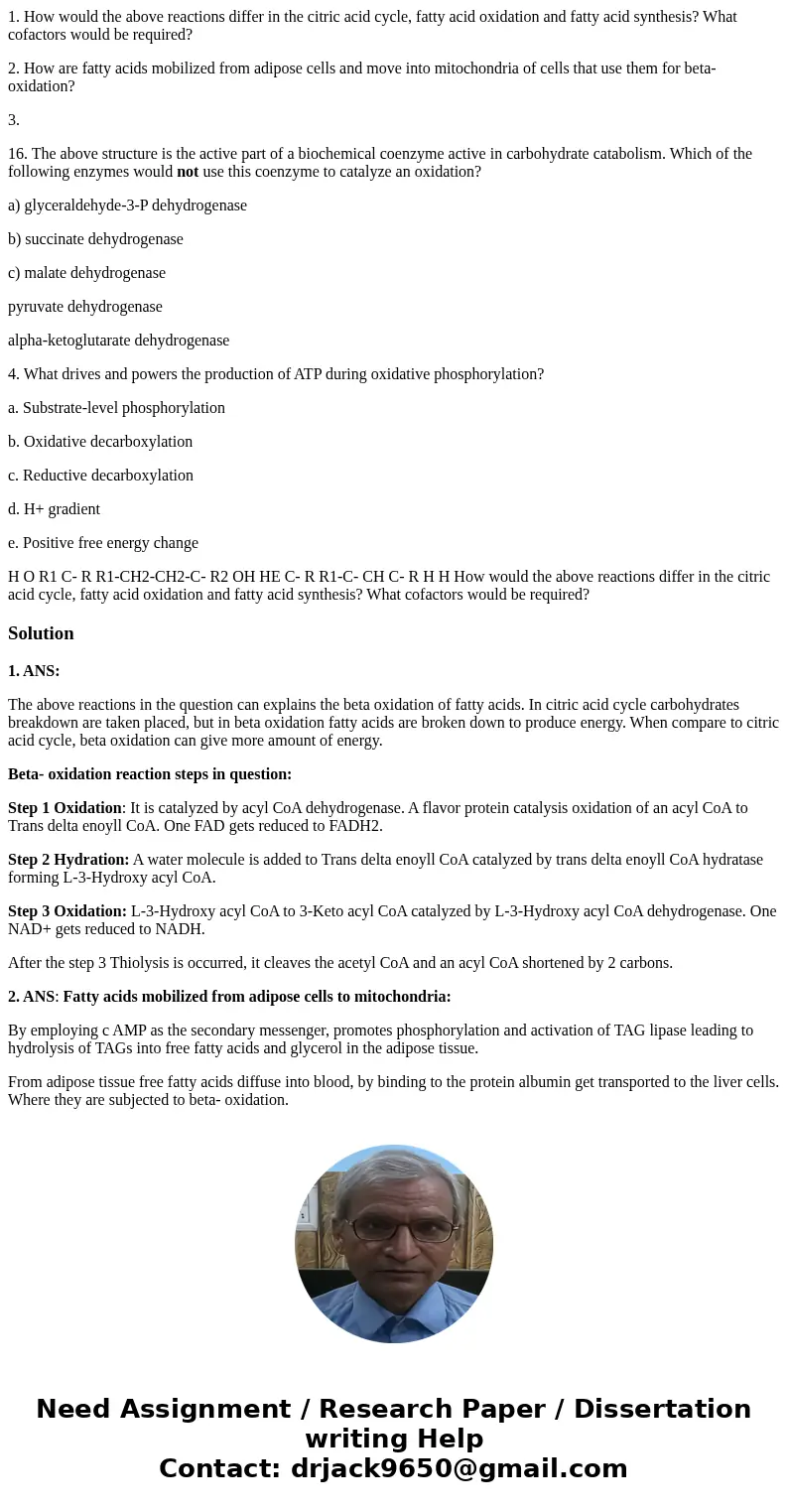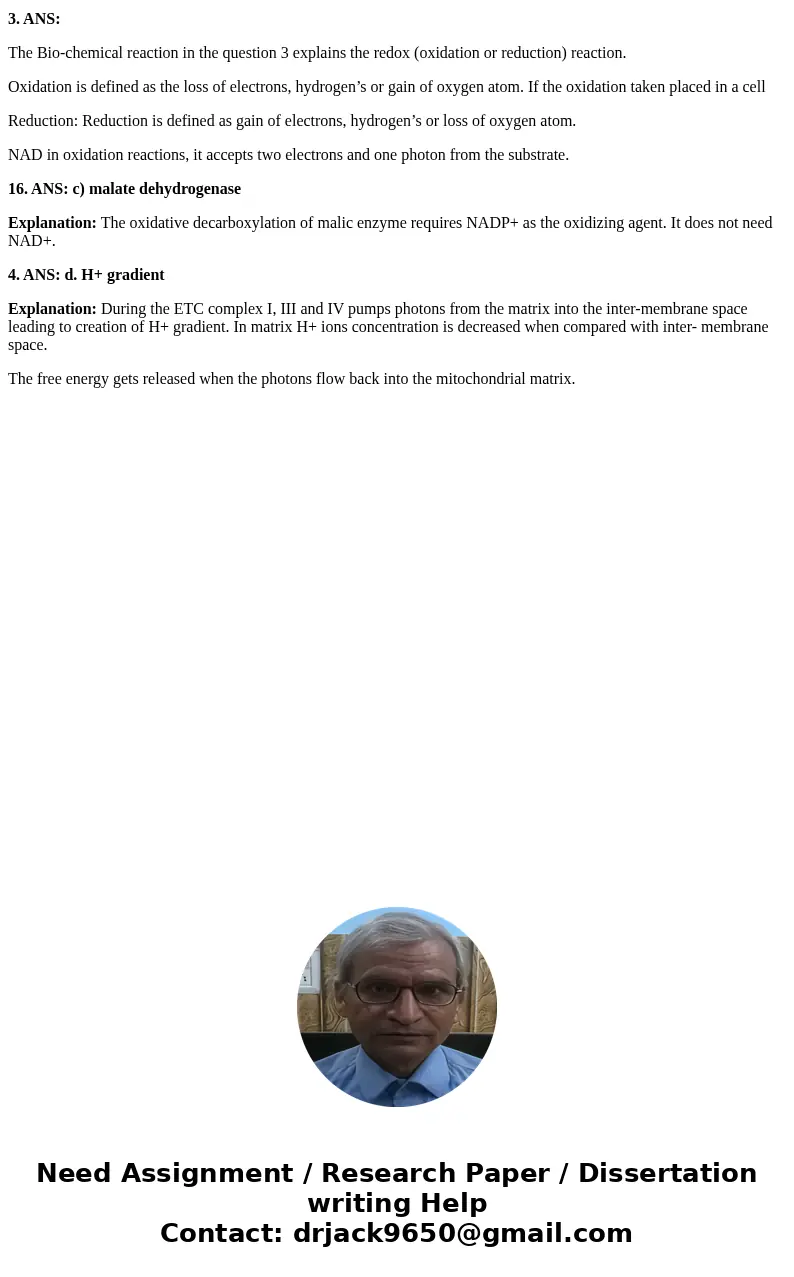1 How would the above reactions differ in the citric acid cy
1. How would the above reactions differ in the citric acid cycle, fatty acid oxidation and fatty acid synthesis? What cofactors would be required?
2. How are fatty acids mobilized from adipose cells and move into mitochondria of cells that use them for beta-oxidation?
3.
16. The above structure is the active part of a biochemical coenzyme active in carbohydrate catabolism. Which of the following enzymes would not use this coenzyme to catalyze an oxidation?
a) glyceraldehyde-3-P dehydrogenase
b) succinate dehydrogenase
c) malate dehydrogenase
pyruvate dehydrogenase
alpha-ketoglutarate dehydrogenase
4. What drives and powers the production of ATP during oxidative phosphorylation?
a. Substrate-level phosphorylation
b. Oxidative decarboxylation
c. Reductive decarboxylation
d. H+ gradient
e. Positive free energy change
H O R1 C- R R1-CH2-CH2-C- R2 OH HE C- R R1-C- CH C- R H H How would the above reactions differ in the citric acid cycle, fatty acid oxidation and fatty acid synthesis? What cofactors would be required?Solution
1. ANS:
The above reactions in the question can explains the beta oxidation of fatty acids. In citric acid cycle carbohydrates breakdown are taken placed, but in beta oxidation fatty acids are broken down to produce energy. When compare to citric acid cycle, beta oxidation can give more amount of energy.
Beta- oxidation reaction steps in question:
Step 1 Oxidation: It is catalyzed by acyl CoA dehydrogenase. A flavor protein catalysis oxidation of an acyl CoA to Trans delta enoyll CoA. One FAD gets reduced to FADH2.
Step 2 Hydration: A water molecule is added to Trans delta enoyll CoA catalyzed by trans delta enoyll CoA hydratase forming L-3-Hydroxy acyl CoA.
Step 3 Oxidation: L-3-Hydroxy acyl CoA to 3-Keto acyl CoA catalyzed by L-3-Hydroxy acyl CoA dehydrogenase. One NAD+ gets reduced to NADH.
After the step 3 Thiolysis is occurred, it cleaves the acetyl CoA and an acyl CoA shortened by 2 carbons.
2. ANS: Fatty acids mobilized from adipose cells to mitochondria:
By employing c AMP as the secondary messenger, promotes phosphorylation and activation of TAG lipase leading to hydrolysis of TAGs into free fatty acids and glycerol in the adipose tissue.
From adipose tissue free fatty acids diffuse into blood, by binding to the protein albumin get transported to the liver cells. Where they are subjected to beta- oxidation.
3. ANS:
The Bio-chemical reaction in the question 3 explains the redox (oxidation or reduction) reaction.
Oxidation is defined as the loss of electrons, hydrogen’s or gain of oxygen atom. If the oxidation taken placed in a cell
Reduction: Reduction is defined as gain of electrons, hydrogen’s or loss of oxygen atom.
NAD in oxidation reactions, it accepts two electrons and one photon from the substrate.
16. ANS: c) malate dehydrogenase
Explanation: The oxidative decarboxylation of malic enzyme requires NADP+ as the oxidizing agent. It does not need NAD+.
4. ANS: d. H+ gradient
Explanation: During the ETC complex I, III and IV pumps photons from the matrix into the inter-membrane space leading to creation of H+ gradient. In matrix H+ ions concentration is decreased when compared with inter- membrane space.
The free energy gets released when the photons flow back into the mitochondrial matrix.


 Homework Sourse
Homework Sourse